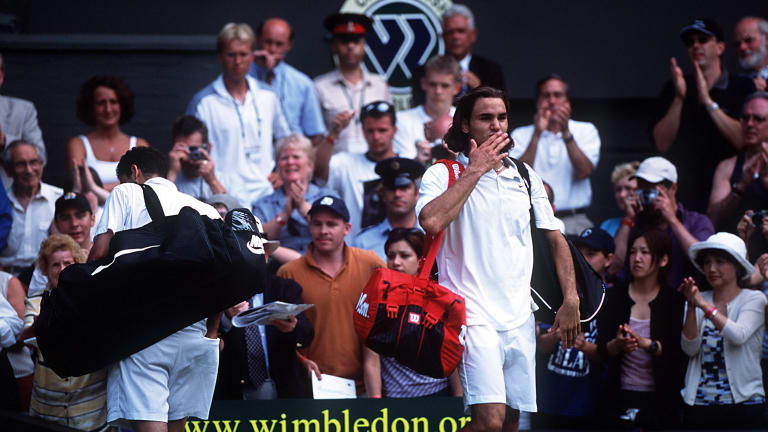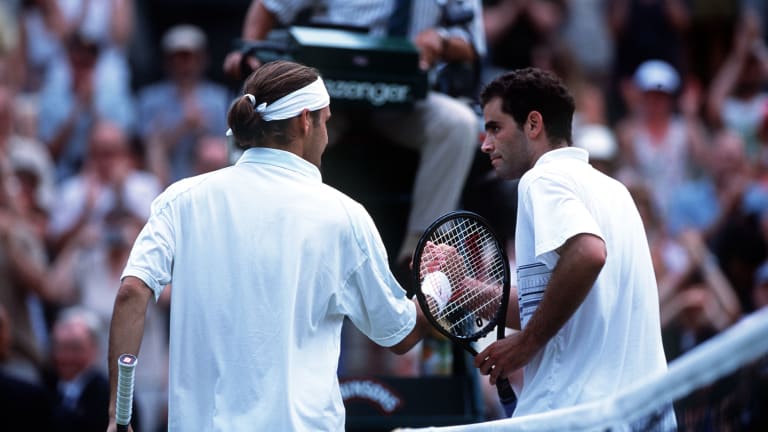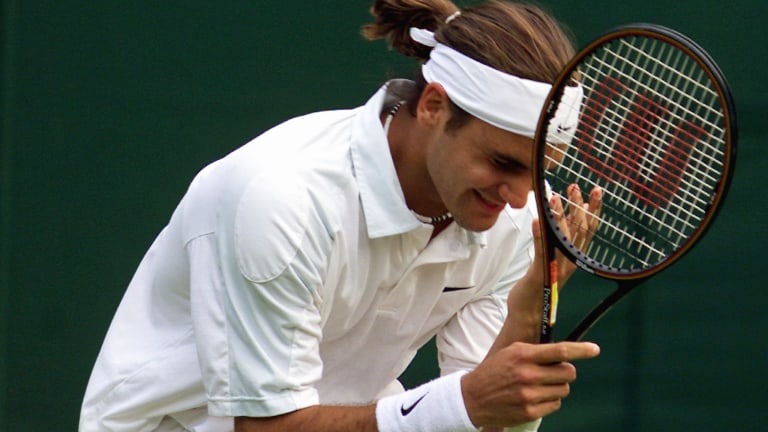THE MOMENT
Federer the man was born in Basel. Federer the legend came of age just shy of his 20th birthday, in his Centre Court debut at the All England Club. A former junior champion and avid serve-and-volleyer, he presented as an obvious heir apparent to his idol and then-reigning champion, Sampras, who was himself in the midst of a 32-match Wimbledon winning streak after winning the last four titles.
“Sometimes it was weird, I look on the other side of the net, I saw him—sometimes I was like, it's just true, kind of that this is happening now, that I'm playing against him,” Federer said of the surreal moment after the match. “But then it just goes away, this feeling. You think about your serve, where you’re going to go, then it’s like playing against maybe some other player, you know. But it’s obviously something special for me to play Pete.”
Federer came to the coin toss aiming to outduel Sampras with his own weapon—an 85-square inch Wilson Pro Staff closer in ancestry to a wooden racquet than any equipment employed today—and in similar Nike attire. The Swiss teenager was fresh off a maiden major quarterfinal at Roland Garros to earn his first Grand Slam seeding, but he needed five sets to defeat Xavier Malisse in the second round. Sampras, too, struggled after a decisive opener, but regained his dominance to make it to Manic Monday for a 10th straight year.


